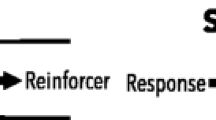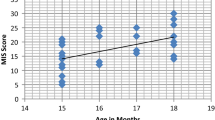Abstract
The role of repetition as a facilitator of spontaneous language acquisition was examined in a 12-month longitudinal study of three children: John, Mindy, and Ashley. Imitation was first defined in a traditional fashion as the exact repetition of a model utterance, within five utterances, without changing the model except to reduce it. During the single-word utterance period, John entered words into his vocabulary by imitating them and then using them spontaneously, while the two girls did not. He also imitated longer utterances than he produced spontaneously while the two girls did not. At the same time, John showed the most rapid language acquisition of the three children. John did not use imitation, as defined, to enter new syntactic-semantic relations into his speech during the two-word stage. However, when the definition of imitation was broadened to include other kinds of repetitions such as repetitions with expansion, either of the child's own productions or of those of others, it was found that repetitions played a significant role in the acquisition of new vocabulary and new syntactic-semantic relations in two-word utterances.
Similar content being viewed by others
References
Bloom, L., Hood, L., and Lightbown, P. (1974). Imitation in language development: If, when, and why.Cogn. Psychol. 6:380–420.
Braine, M. D. S. (1971). The acquisition of language in infant and child. In Reed, C. (ed.),The Learning of Language, Appleton, New York.
Clark, R. (1977). What's the use of imitation.J. Child Lang. 4:341–358.
Corrigan, R. (1976). Patterns of individual communication and cognitive development. Doctoral dissertation, University of Denver.Diss. Abstr. Int. 37(10):5393B (1977).
Corrigan, R. (1978). Language development as related to stage 6 object permanence development.J. Child Lang. 5:173–189.
Dale, P. (1972).Language Development Structure and Function, Dryden, Chicago.
Ervin, S. (1964). Imitation and structural change in children's language. In Lenneberg, E. H. (ed.),New Directions in the Study of Language, MIT Press, Cambridge, Mass.
Fodor, J. (1966). How to learn to talk: Some simple ways. In Smith, F., and Miller, G. A. (eds.),The Genesis of Language, MIT Press, Cambridge, Mass.
Jenkins, J. (1969). The acquisition of language. In Goslin, D. (ed.),Handbook of Socialization Theory and Research, Rand McNally, Chicago.
MacWhinney, B. (1975). Rules, rote and analogy in morphological formations by Hungarian children.J. Child Lang. 2:65–77.
MacWhinney, B. (1976). Hungarian research on the acquisition of morphology and syntax.J. Child Lang. 3:397–410.
MacWhinney, B. (1978) Processing a first language: The acquisition of morphophonology.Monogr. Soc. Res. Child Dev. 43:Nos. 1–2.
McNeill, D. (1966). Developmental psycholinguistics. In Smith, F., and Miller, G. A. (eds.),The Genesis of Language, MIT Press, Cambridge, Mass.
McNeill, D. (1970).The Acquisition of Language, Harper and Row, New York.
Mowrer, O. H. (1960).Learning Theory and the Symbolic Process, Wiley, New York.
Nicolich, L., and Raph, J. (1975). The relationship of symbolic maturity as observed in play to spontaneous vocal imitation in early language development. Paper presented at Society for Research in Child Development Meeting, April.
Rees, N. (1975). Imitation and language development: Issues and clinical implications.J. Speech Hearing Disorders 40:339–350.
Rodd, L., and Braine, M. D. S. (1971). Children's imitations of syntactic constructions as a measure of linguistic competence.J. Verb. Learn. Verb. Behav. 10:430–443.
Ryan, J. (1973). Interpretation and imitation in early language development. In Hinde, R., and Hinde, J. (eds.),Constraints on Learning: Limitations and Predispositions, Academic Press, London.
Scollon, R. (1976).Conversations with a One Year Old, University of Hawaii Press, Honolulu.
Shipley, E., Smith, C., and Gleitman, L. (1969). A study in the acquisition of language: Free response to commands.Language 45:322–342.
Author information
Authors and Affiliations
Additional information
This article is based, in part, on a Ph.D. dissertation submitted to the Department of Psychology, University of Denver, in 1976. Portions of the article were presented at the Wisconsin Education Research Association, Oshkosh, Wisconsin, December 1–2, 1977. The research was undertaken while the author was an NIMH predoctoral fellow, 5F01 MH55918-02 MTHL, and was also supported by a Grant Foundation grant for graduate student research to Dr. Marshall Haith and a Spencer Foundation grant to Dr. Kurt Fischer.
Rights and permissions
About this article
Cite this article
Corrigan, R. Use of repetition to facilitate spontaneous language acquisition. J Psycholinguist Res 9, 231–241 (1980). https://doi.org/10.1007/BF01067239
Accepted:
Issue Date:
DOI: https://doi.org/10.1007/BF01067239




